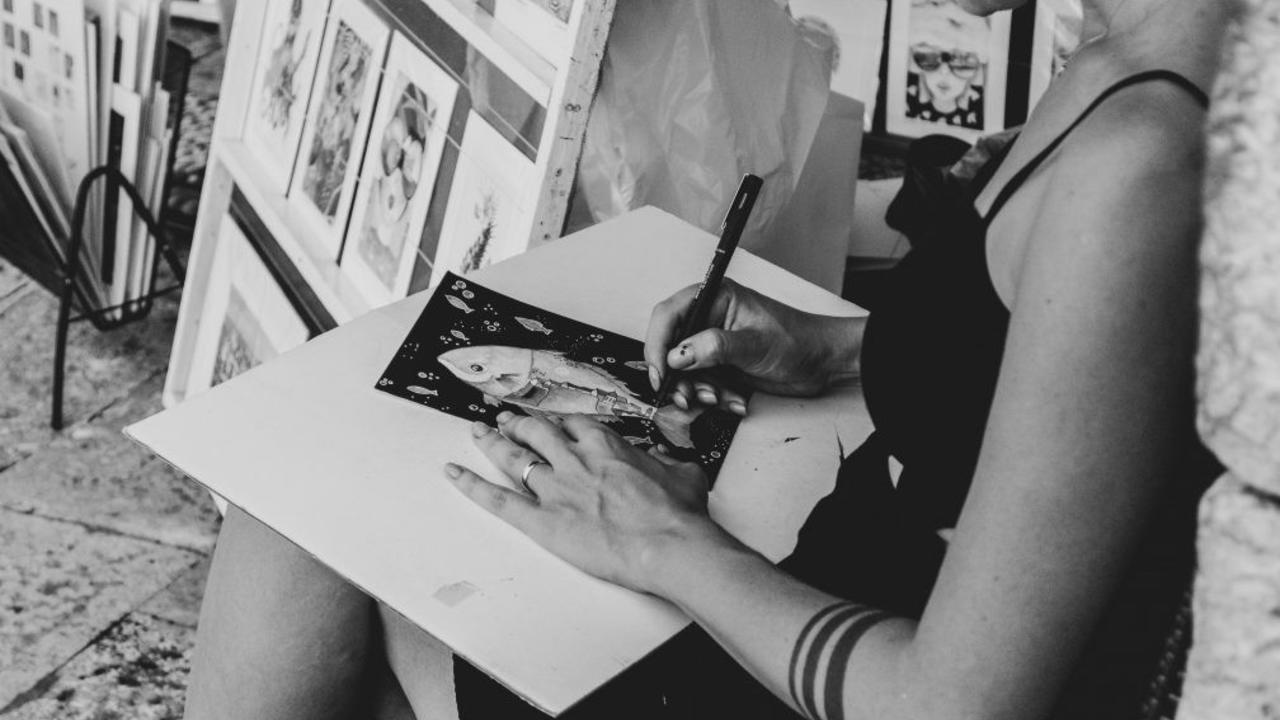The Viewing Space as Part of the Process of Creativity
Oct 28, 2019
When we create artwork lessons for you on ArtEyeDeer, we sit at a fantastic old table, with our artwork in front of us, the video camera positioned overhead, and two large light reflectors either side of the camera to diffuse and even out the light. Pretty ideal conditions for making and recording artworks.
Even we, however, need to stop and think about our artwork from a different visual perspective, each time we record. This is because we are always looking down at our work, and the video camera is recording the making process from above. But, is this the way we really view artworks? In everyday life, two dimensional artworks are generally viewed hung from a vertical wall surface. As the viewer, we can move away from the artwork to take it all in from a distance, move close to its surface to view it in detail, or live with it in our homes as a visual statement that we encounter every day as part of our experience of home.
In public Art Galleries or Art Museums, we are often guided through our experience of the work on the walls through a curatorial process. A curator (a person responsible for the acquisition, management and display of artworks) has a strong part to play in determining how we might see, process, and relate to the artwork, and those that are placed around it. The height at which we view the artwork is determined carefully. The distance between one work and another is considered during a gallery hang – how much viewing space do we need to absorb what is in front of us, before we move on? All these deliberations, and more, become part of the viewing experience.
But what viewing space do you need during the making of your art? It is so tempting to work on a piece at a desk or table, and never consider what it might look like viewed on a wall until it is finished. By then, you’ve packed away your art equipment, cleaned up and moved on. Then you hold the finished work up for the first time. It can sometimes surprise you that it looks so different. Suddenly, small aspects of its construction might begin to bother you – what if I’d reinforced that line? If only I’d worked over that section to make it visually stand out more? I didn’t realise that those two colours would react so strongly against each other.
Viewing artworks in-process, away from the place where they are being made, is an essential part of the art creation practice. In fact, it’s one of the most important components of the process of creativity. So, as you are making art, build in times where you STOP, remove the work from your horizontal making surface, and place it on a section of wall where there is space enough around it to view it without too much extraneous distraction. Even leaning the artwork on a piece of furniture that’s against a wall is ok for this viewing process. Stand back from the artwork, at least a metre or two large steps. Turn away from the artwork, then turn slowly back towards it. Take in what hits you immediately about the image – is it a good thing or a disappointing thing that’s drawing your attention? Remember, the artwork is unfinished at this point – so much can alter and change as the work develops. Take the work back to your making space and keep going. This process of assessment isn’t about radically altering the artwork; it’s just part of the practice of creating. You can make slight changes each time you view the artwork, small alterations that come together to fuel the progress of the image. If you use this viewing methodology roughly three times during the making, you will find it immensely helpful. What might start out as feeling awkward and unfamiliar, will eventually, with persistent use, become a foundational strategy that will seem natural and organic.
The value-added part of this practice is the assurance you feel when the artwork is finished and placed on a wall surface. At this point, because you’ve understood the viewing space as an important part of the process of creativity, you’re ready to let the making part go and celebrate the resolution of your creative efforts.
When we teach you through our ArtEyeDeer lessons, we see you as an artist. As such, we love offering you artist tips for engaging with the process of creativity. Build this facet of making into your artist repertoire – it’s a time-honoured practice that strengthens your analytic skills set.
Wendy Muir
Art Eye Deer Teacher

